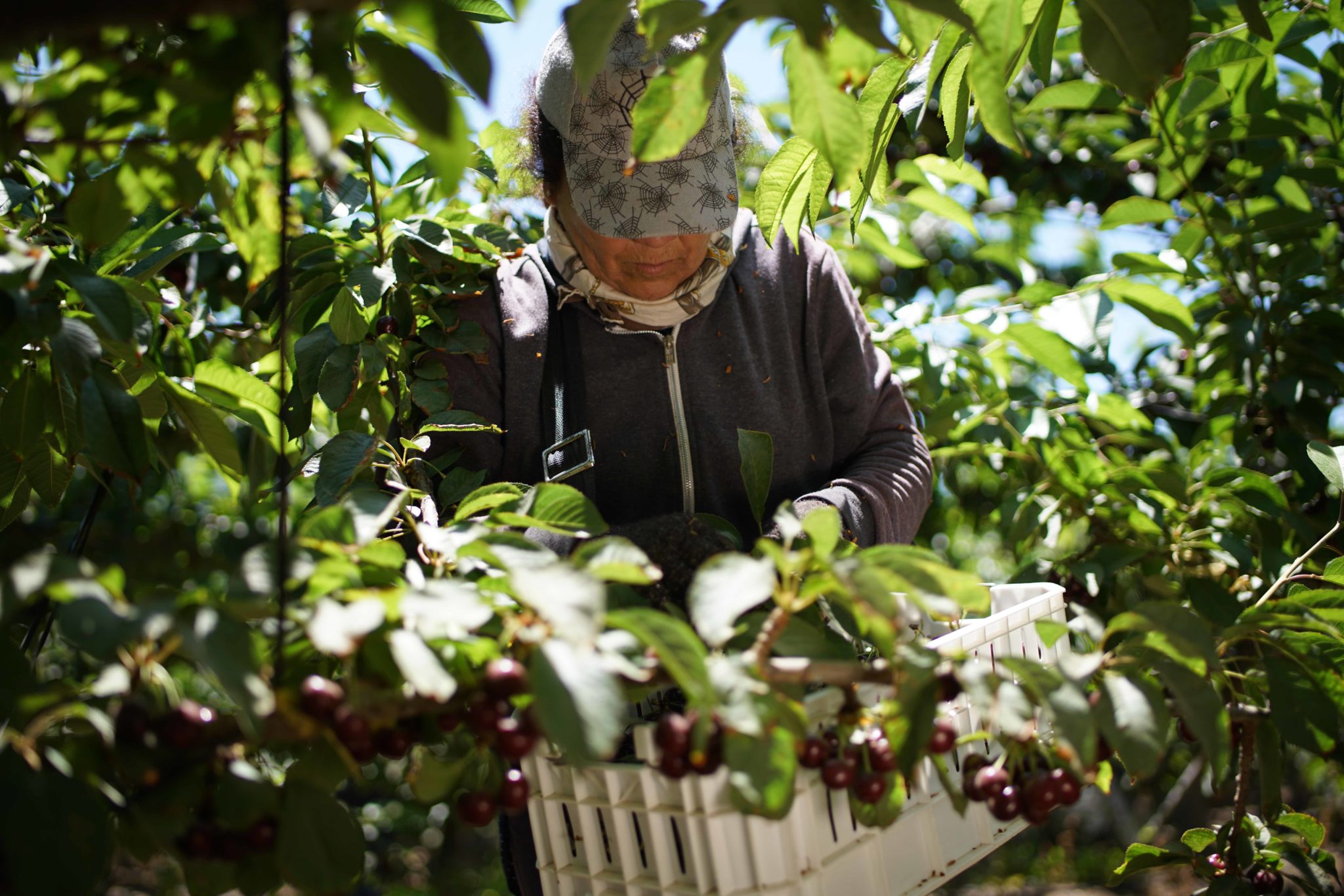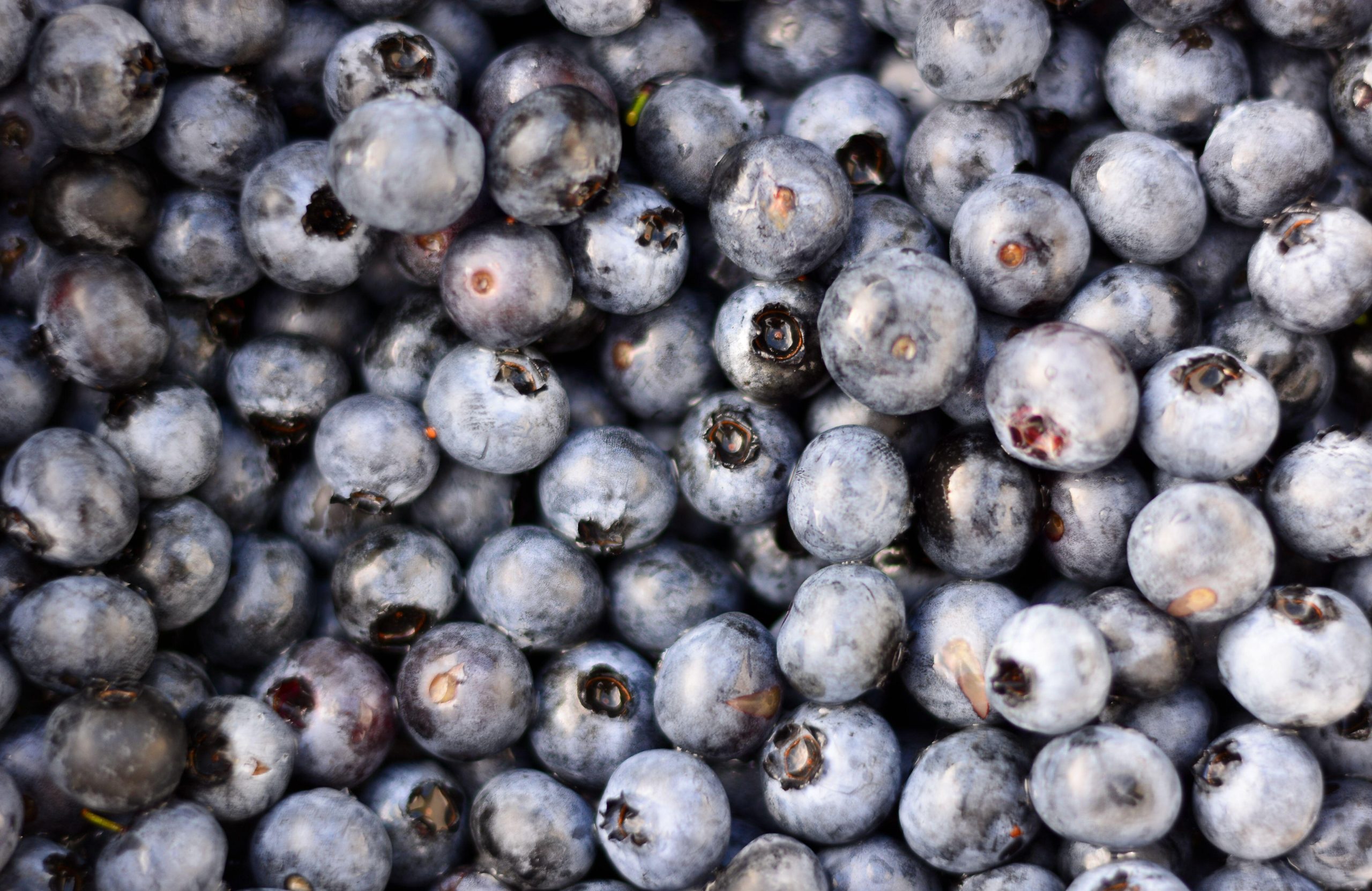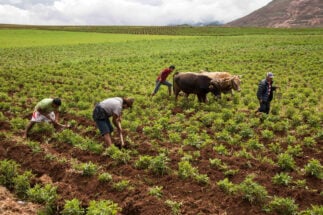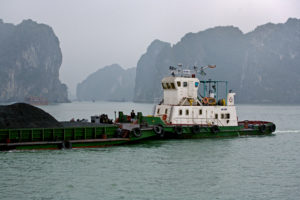Less than a decade ago, Peru did not export many blueberries. But the country has now managed to position itself as a major player in the global market, and become the world’s leading blueberry exporter.
28%
Peru’s blueberry exports in the 2022-23 season are expected to grow by 28% on last year, according to the Association of Blueberry Producers of Peru
“The growth has been truly exponential and a lot of labour has been generated along the way,” said Alfredo Lira Chirif, an agronomist and general manager of Agrícola Cerro Prieto, one of the main blueberry exporters in La Libertad, a department in the country’s north that is responsible for more shipments than any other, according to the Association of Blueberry Producers of Peru (Proarándanos).
Nationwide, the association estimates that the 2022-23 season will close with shipments of 285,000 tonnes, a 28% increase on last year’s output.
But as the Peruvian blueberry industry continues to expand, it faces increasing challenges to remain sustainable, chief among them confronting the issue of water scarcity, as well as price reductions due to increased supply and insufficient labour.
Climbing the rankings
The continued growth of the Peruvian blueberry contrasts with the situation in neighbouring Chile – its main competitor in the region. Between January and August 2022 alone, there was a 6% drop in exports compared to the previous period, according to its Office of Agricultural Studies and Policies (ODEPA).
The two nation’s differing fortunes have partly arisen due to logistical difficulties Chilean producers have faced in recent times, according to Christian Seydewitz, senior vice-president for Chile of the shipping company Hapag Lloyd. “There is a serious shortage of space on ships, which is driving the increase in prices and the current scenario,” he told Portalfruticola.
But various other factors have allowed Peru to rise to overtake its southern neighbour and become the world’s leading exporter of fresh blueberries. Initially, there was an attractive commercial window that the country identified in the northern hemisphere, particularly in the American market.
With little supply, growers were getting a higher price for the berry. “That helped growth to be rapid because prices in that window were high,” Alfredo Lira added.
Other factors that contributed to the growth of the Peruvian sector were the increased genetic development of varieties and favourable climatic conditions for production. “The climate in the producing areas is quite temperate, which ensures good quality and early production of blueberries,” said Vega. “The country’s international agreements have also been important in encouraging exports. Peru’s National Agricultural Health Service (Senasa) has been important in opening up new markets.”
These drivers have made it possible for the Peruvian blueberry to reach different continents and begin to position itself in countries such as China – itself a notable producer.
According to Proarándanos estimates, at the end of the 2021-22 season, China accounted for a 12% share of Peruvian exports, placing it in third position. For the 2022-23 season, it is expected to represent 14% of shipments by volume.

“It is the destination that has been growing the most in percentage terms,” said Vega, who also highlighted the potential in the Chinese market.
Liang Yu, the Chinese ambassador to Peru, has himself talked of a great demand in the country for newer exports such as blueberries.
“With a market of 1.4 billion people, the demand for typical Peruvian confectionery with local inputs is going to be well received. Quinoa, avocado and blueberries will continue to be the preferred foods,” the ambassador was quoted as saying in June this year.
Agrícola Cerro Prieto’s Lira said Chinese consumers are demanding and placing greater value by aspects such as size, flavour and a higher Brix score – which indicates higher concentrations of natural sugar, mineral content, antioxidants, and other vitamins. Lira also pointed to advantages for the Peruvian industry in its knowledge and experience of producing quality crops that are uniform in the desired characteristics.
“The market wants homogenous quality,” Lira said, adding that the Chinese consumer values large, sweet fruit. The potential for growth in this market is enormous as, Lira reports, per capita consumption of blueberries in Asia is around 30 g per year, while in the United States – an already established market – it reaches 2.5 kg per capita. “It is important to have varieties that meet these attributes and that can sustain the shipments to China,” he added.
Sustainable growth
As it looks to grow further while meeting the demands of new consumers, Peru’s blueberry industry faces challenges to remain sustainable, in water scarcity, sustaining prices and meeting labour requirements.
Andrés Mujica, president of the sustainability committee of the Association of Peruvian Agricultural Producers’ Guilds (AGAP), highlighted that the expansion of customer bases and markets has created great demands in terms of water footprint and pesticide use.
Increased restrictions in different markets on the maximum residue limits – the maximum level of pesticides tolerated on crops – and the search for more attractive prices have pushed Peruvian companies to opt for organic production, which already accounts for around 11% of the fresh blueberries produced in the country.

Santiago Gómez, who has co-authored research on fumigation of blueberry crops, told Diálogo Chino that since 2017, there have been increased efforts to seek the best practices to reduce the presence of chemicals in the production process. His work has investigated the use of drones as an innovative technology for the fumigation of crop fields, although several limitations remain to their broader use. These include limited flight times of due to battery life and, primarily, the limited capacity of water tanks.
Another challenge for the sector is linked to the development of efficient solutions for organic producers, which is still a nascent niche in Peru. “Not much progress has been made in biological [pest] control,” José Villacorta Chávez, a researcher who has studied blueberry sustainability in La Libertad.
The prevalence of sandy soils in Peru and the higher cost of organic production on them also present challenges. “In conventional agriculture, the plant is constantly being fertilised. However, in organic agriculture, when the aim is to nourish the plant, this is done through soil fertilisation,” agricultural consultant Antonio Gaete explained to Redagrícola. “Therefore, as the soils are mostly of a poor quality, it will be very difficult to achieve this fertilisation.”
José Villacorta explained that there are agrochemical companies that are researching liquid fertilisation, a process by which fertilisers dissolved in water are applied directly to the crop. However, these have not yet achieved the desired results.
Looking to technology
In an arena of increased international competition, Peruvian agro-exporters have sought to differentiate themselves by becoming more cost-efficient and investing in more sustainable technology.
“We have a lot of organic blueberries and we are trying to innovate in terms of organic fertilisation. We are getting stronger in our experiments,” said Agrícola Cerro Prieto’s Lira. He reported that in 2021, the company he represents accessed US$160 million in financing to strengthen its sustainability efforts.
His farm works to measure its carbon footprint, and also has a National Water Authority (ANA) “blue certificate”, a recognition granted by the agency to responsible water users. Lira explains that their system involved the placement of a probe at the stem of each tree to measure water consumption per tree.
We have a lot of organic blueberries and we are trying to innovate in terms of organic fertilisation. We are getting stronger in our experiments
AGAP’s Mujica explained that as Peruvian companies look to expand their production sustainably, some are investing in wastewater treatment projects to avoid overuse and the contamination of the water table. He named Lira’s Agrícola Cerro Prieto, as well as Agrokasa, Sunfruits and Agrícola Santa Azul as companies working on such initiatives.
The majority of Peru’s blueberry production takes place near the country’s desert coast. For this reason, the main challenge will always be water supply.
José Villacorta said that there is still “a long way to go” in terms of the industry’s water management. “The country has a lot of water, but they can’t make the right transfers [to areas where it is needed]. I believe that irrigation technology can be more efficient, but the country’s problem is going to be more about water supply,” he warned. He insisted that it is important to continue building reservoirs.
In the north of the country, the third part of the massive Chavimochic project, a system which hopes to irrigate 160,000 hectares of farmland, has nearly been completed after more than ten years of work.
Elsewhere, some companies are looking to meet the water challenge by exploring the production of potted blueberries instead of soil-grown fruits; although this method requires a higher investment, one of its advantages is that it produces more plants per hectare and consumes less water. According to Agrícola Cerro Prieto’s Lira, potted production consumes half as much water as conventional production in soil.
It has been a promising, and precipitous, rise for Peru’s blueberry producers in the past decade, but overcoming environmental challenges will be vital if the nation is to consolidate its position as the world’s leading exporter over the medium and long term.








